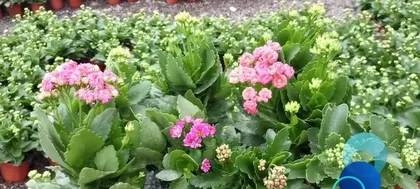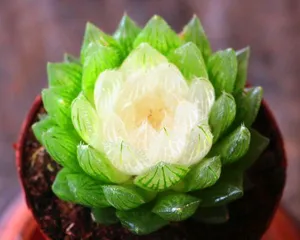Succulent plants are one of the most popular plants in recent years, beloved by gardening enthusiasts for their unique shapes, flowers, and colors. Are succulent plants flowers? What plant category do succulents belong to? How to properly care for succulent plants? This article will provide a comprehensive analysis of succulent plants from various aspects.

I. Definition of Succulent Plants
Succulent plants refer to a type of plant that can survive in arid environments. They typically have specialized water storage organs, such as thick stems, leaves, and roots, to store and utilize water from the soil. The name "succulent" comes from their appearance, which usually features thick, fleshy, and juicy parts.
II. Varieties of Succulent Plants
Succulent plants belong to the Angiospermae phylum and include thousands of species. Common varieties of succulent plants include cacti, Monstera deliciosa, Saxifraga, Clematis, and Sedum.

III. Characteristics of Succulent Plants
Succulent plants have many unique characteristics. They typically have thick, fleshy, and juicy parts that can store water for long periods. Their stems, leaves, and roots have a smaller surface area to reduce water loss and evaporation. Furthermore, succulent plants generally prefer environments with plenty of sunlight, good air circulation, and suitable temperatures.
IV. Flowers of Succulent Plants
The flowers of succulent plants are usually small and delicate, but they are often vibrant and unique, attracting people's attention. Different varieties of succulents have diverse flower shapes and colors. For example, cactus flowers are bell-shaped or funnel-shaped, while Clematis flowers are long and tubular.
V. Growing Environment for Succulent Plants
Succulent plants usually grow in arid regions such as deserts, semi-arid areas, and rocky terrain. When grown indoors, they should be provided with an environment that has sufficient sunlight, good ventilation, and appropriate temperatures.

VI. Care Methods for Succulent Plants
Caring for succulent plants is relatively simple, but some details need attention. A well-ventilated and well-draining soil should be chosen. Watering should follow the principle of "less water, more often" to avoid waterlogging and overwatering. Furthermore, succulent plants need plenty of sunlight but should also be protected from excessive sun exposure.
VII. How to Propagate Succulent Plants
Succulent plants can be propagated by stem cuttings, division, and leaf cuttings. Among these, stem cuttings are one of the most common methods. Before propagating, a healthy and robust stem should be selected, left to dry for 1-2 days, and then inserted into potting soil to grow.
VIII. Common Problems with Succulent Plants
Succulent plants can also encounter some problems, such as yellowing leaves, wilting, and pests and diseases. When problems are discovered, timely measures should be taken, such as adjusting the amount of water, applying fertilizer, and controlling pests and diseases.
IX. Potting Methods for Succulent Plants
Succulent plants can be potted in ceramic pots, glass jars, flower pots, and other containers. When potting, a pot of suitable size, well-ventilated soil, and a good drainage system should be chosen.
X. Application Value of Succulent Plants
Succulent plants are not just ornamental plants; they also have certain application values. For example, cacti can be used to extract various medicinal ingredients, and Clematis can be used in herbal medicine.
XI. Cultural Significance of Succulent Plants
Succulent plants have different symbolic meanings in different regions and cultures. For example, in China, Clematis is regarded as a symbol of good fortune and longevity.
XII. Tourism Resources Related to Succulent Plants
Because succulent plants often grow in arid environments, they have also become one of the special attractions in some tourist areas, such as Hongshan in Xinjiang and Xiangshawan in Inner Mongolia.
XIII. Succulent Plants and Human Health
Succulent plants have certain health benefits for humans. They can purify the air, regulate indoor humidity, and relieve stress.
XIV. Future Development Trends of Succulent Plants
As people pay more attention to the natural environment and green living, the care and appreciation of succulent plants have become a new form of leisure. In the future, the development prospects for succulent plants are broad.
XV.
Through the comprehensive analysis of succulent plants, we have come to understand their varieties, characteristics, and care methods. As a unique category of plants, succulents not only have ornamental value but also possess certain application and health benefits. In daily care, we need to pay attention to the characteristics and care methods of succulents to keep them healthy and thriving.